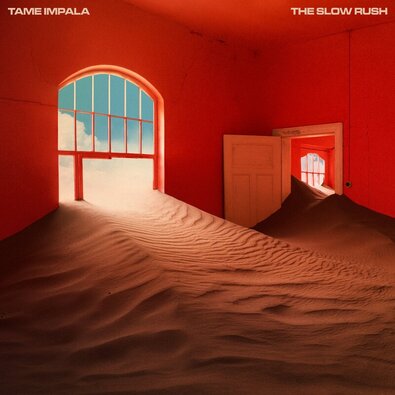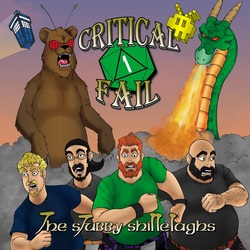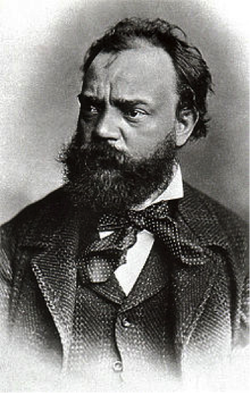Written by John Edward Betancourt  Key Art for ‘Live Breathe Fight’ Courtesy of Tamela Mann Key Art for ‘Live Breathe Fight’ Courtesy of Tamela Mann There was a time where gospel music, was something that you really only heard on Sundays. For it was truly reserved for Church and nothing more. But somewhere along the line, that all changed, and gospel music became quite mainstream in nature, and it continues to do well on the charts. Simply because it is indeed a genre of music that works to uplift, that works to nourish, and there’s nothing wrong with that. For who doesn’t need a little pick me up now and again, and well, gospel is top of mind today because one of its biggest stars, has a new album on the horizon. For recently, Grammy Award-Winning Gospel Superstar Tamela Mann let it be known that she has a new album coming out on October 11, 2024, entitled, Live Breathe Fight, and it promises to be some of her finest work to date. Which is saying something when one considers her resume. But Tamela has put so much into this album, and to give you an idea of how epic it will be, here are all the details on her new album and a link to see the first single from the album, ‘Working for Me’, on YouTube, as we begin the countdown to another uplifting album from one of gospel’s biggest stars. ‘Renowned gospel artist Tamela Mann is set to release her highly anticipated new album, "Live Breathe Fight," on Friday, October 11. This album marks an exhilarating new chapter in the Grammy winner’s illustrious career, showcasing not only her extraordinary vocal talent but also her significant growth as a songwriter. Mann is coming off the heels of appearances this month at the prestigious Stellar Awards, where she performed her new single “Working For Me” from the album; and the National Urban League Conference, where she and her husband David Mann received the President's Award, the National Urban League’s highest honor. “I want the Lord to be proud of the work I’m doing and the ways I’m using the gift that He’s given me. Live like heaven is your destiny, breathe every breath with purpose, and fight until you get the victory,” Mann declares, encapsulating the spirit of her new album. "Live Breathe Fight" heralds Tamela’s message of surrendering to God’s will and fighting for a life of purpose and fulfillment. The album’s first single, “Working for Me” (currently #11 and rapidly climbing the Gospel charts), is a heartfelt anthem reflecting Mann’s personal journey and belief that despite life’s challenges, God is always working for our good. Tamela Mann takes listeners on an emotional and spiritual journey with tracks like “Power,” which speaks to the strength found in Jesus, and “Lord I Trust You,” emphasizing the importance of casting our burdens on the Lord. LIVE BREATHE FIGHT - TRACK LISTING:
Mann’s latest project is not only lyrically profound but also sonically diverse. With a mix of upbeat tracks, soulful ballads, and a hint of country influence — a nod to her Texas roots, "Live Breathe Fight" stands out as one of her most adventurous and confident works to date. Collaborating with producers Jevon Hill and Phillip Bryant, Mann has meticulously crafted an album that resonates with heartfelt worship and raw emotion. Don’t miss the release of "Live Breathe Fight" on October 11, as Tamela Mann continues to inspire and uplift with her powerful music. For the latest updates on Tamela Mann: Website: http://www.tillymannmusic.com Facebook: @DavidTamelaMann Instagram: @DavidandTamela X: @DavidandTamela TikTok: @TheRealTamelaMann ABOUT TAMELA MANN: “Live Breathe Fight,” available October 11, is the latest accomplishment in Tamela’s storied career. An accomplished songwriter, producer, actress, and businesswoman, Tamela has amassed a Grammy® Award, BET® Award, Billboard® Music Award, and multiple NAACP Image® Awards and Stellar® Gospel Music Awards. Her Billboard No. 1 album Best Days includes the No. 1 platinum single “Take Me to The King'' and received Billboard’s “Album of the Decade” for 2010-2019, in the Gospel category. Tamela’s Billboard No. 1 album, One Way, garnered two No. 1 singles, including “Change Me” and “God Provides,” which earned the singer her first Grammy® Award in 2017. In 2018, Tamela and her husband, NAACP Image® Award winning actor David Mann, released their first book and joint album, Us Against the World. The book won an NAACP Image® Award for Outstanding Literary Work and the album garnered top-charting singles including the Urban AC track, “Ups & Downs.” Tamela hit the big screen in 2023 in The Color Purple movie musical release, produced by Oprah Winfrey and Steven Spielberg. Tamela and David together helm Tillymann Entertainment. They starred in the NAACP Image® Award-winning docu-series “The Manns,” the hit comedy “Mann & Wife,” and are currently starring in “Tyler Perry’s Assisted Living.” Tamela’s athleisure apparel and shapewear line, the Tamela Mann Collection, is available at TamelaMann.com and in select retail stores.’
0 Comments
Written by John Edward Betancourt  WE ARE LADY PARTS -- Pictured: "We Are Lady Parts" Key Art -- (Photo by: Peacock) WE ARE LADY PARTS -- Pictured: "We Are Lady Parts" Key Art -- (Photo by: Peacock) One thing that hardcore fans of television shows and movies do often, but that we don’t talk about enough… is pour over everything available that accompanies that show or movie. Which means they’ll grab hold of any official companion book or magazine, and they’ll scour fan sites and entertainment news sites for news and write ups about these beloved stories and… they’ll also do their best to get hold of the soundtrack and play the darn thing on repeat until the file goes corrupt. Simply because hardcore fans want to be immersed in the experience and the emotion their favorite stories send their way and well, Peacock knows this and partnered with Spotify to give all the hardcore fans of We Love Lady Parts, quite the gift. In that, earlier today, a playlist of the series' original music, including new original songs, punk covers of Britney Spears, Hoobastank and more, and Season 1 favorites hit Spotify for all of you to enjoy! Which is simply amazing and a wonderful way to celebrate the arrival of season two of this beloved series. So, with that in mind, if you’re ready to truly immerse yourself in this show and enjoy more of its amazing soundtrack, because it really does slap… here is a link to that Spotify playlist for you enjoy and sing along and dance to as the weekend takes hold. Written by Scott Murray  Tame Impala’s The Slow Rush always felt like it would be relevant, but it turned out to be a work of prophecy. Releasing in February of 2020, the album lived up to its name and accurately encapsulated the feeling of moving quickly while going nowhere. Then Covid hit and the world came to a halt and simultaneously turned up the intensity of everything, all at the same time, giving this album new life and meaning. The Slow Rush effectively communicates a feeling I can’t put into words; one I typically associate with my time growing up on the periphery of Los Angeles, but which still shows up in life periodically regardless of time or place. “Hurry up and wait” is a similar phrase, but is too jerky, too abrupt, not smooth enough to capture the feeling that I can’t quite put into words. I could struggle, and fail, and tell you it feels like being slow but surrounded by speed or floating quickly through a fog that never shows you the same visions twice. Apparently, Kevin Parker, the one-man writer, performer, producer, and mixer who is Tame Impala, found this feeling difficult to put into words too, and instead put it into music. He has done so brilliantly and gifted us an album that both speaks and listens, that knows your history and your confusions and your doubts while simultaneously asking you to tell it your story. In general Tame Impala gets classified as “Psychadelic Rock” and I must agree that genre is broad enough to describe Kevin Parker’s work more effectively than any other, but the music itself is varied and draws from many different styles. This most recent album holds elements of disco, trance, the digital instrumentation early 2000s pop dabbled in, and still remembers the warpy sounds of full power guitar that occasionally appeared in his last album, Currents. The songs themselves are catchy but not in a way where one verse sticks annoyingly in your head. Instead, the songs are complete packages that roll naturally and smoothly from one to the next. Except for one track, Posthumus Forgiveness, the lyrics all hold themes of, well, of that thing I can’t put into words, the titular “Slow Rush.” Borderline feels like a walk through nighttime streets, drifting but not stumbling, traffic lights and streetlights providing floating blooms of color as you drift through the nighttime, the lyrics occasionally providing visible glimpses of past stops on your journey. Breathe Deeper steps and bobs and rolls, providing you something to step in time with while building you up by making it safe to let yourself down. Lost in Yesterday perfectly captures the feeling of nostalgia for something you didn’t want, and On Track turned out to be the perfect song for a life that is both on hold and under the gun. Posthumus Forgiveness, the one I mentioned earlier that doesn’t quite fit with the others, is instead a eulogy, a malediction, and a pardon all at the same time. The singer speaks to their deceased father, holding all the sands of time in their hands as they sift through memories with the benefit of time and distance. Although the lyrics don’t invoke the same sense of disconnected time and place as the rest of the album, they do give the same feeling of being outside of time while simultaneously being acted upon by it. Musically the album plays with its own musical toys, rearranging similar-but-not-quite-identical instrumentation and calling back to themes, melodies, or structures used elsewhere in the album. Three false endings and one false start complete the feeling of being in the music; of being in a Slow Rush and trying to grasp something you cannot control. The Slow Rush was always going to be relevant. We’ve all experienced a period of our lives where we live through our own slow rush. In an ideal world this album would have invoked memory differently for each of us depending on when and where we all are in our own lives. It’s a shame then, that Covid has put us all into a floating fog of uncertainty, making 2020 one of those periods of life where nothing seems sure. What isn’t a shame is that we have such great music to help us through these times: The Slow Rush can be an escape, a catharsis, an observation, or a reminiscence, and no matter which parts of your life are rushing, and which are sluggish, it will always be ready to step in and help you take stock of your own journey. Written by John Edward Betancourt It seems more and more that there is a new genre of music appearing on the scene, one that doesn't have a specific title, but for the sake of today's article, let's just refer to it as Nerd Music and I'm not surprised to see this genre grow and grow because after all this is the age of the nerd and celebrating what we love across every single medium is the thing to do these days. Now the downside to this genre as it grows is that growing pains are evident. I've heard some quality albums, heard some not so quality albums and I understand the struggles, this is a tough medium to perfect. Make it too nerdy and you limit your audience, make it too mainstream and you lose your message. But thankfully, I recently had the chance to enjoy The Stubby Shillelaghs new album "Critical Fail" and as it turns out this Colorado Band has succeeded in providing the world with a fun album that stands out above the rest in the Nerd Music genre and manages to appeal to music fans everywhere. In fact, this is suffice a say a unique album since the Stubbies in my experience keep a Celtic feel to their music when they perform, and they do that well everywhere they go but this album took me by surprise since it managed to stay true to the Stubbies roots while they tried out some new things that absolutely work. But before we get into that, I made mention of appealing to a mass audience and the album does that nicely. There's something nerdy for everyone on "Critical Fail" as the Stubbies cover every nerdy genre out there, if you want Star Wars, you got it. If you want Harry Potter, it's here, but what really made me enjoy the album is the fact that it employs so many different techniques. There are echoes of Weird Al and Tenacious D as the guys bring the fun the whole way. The comedy bits are a lot of fun and the songs leave you either laughing out loud or smiling with delight. But most importantly, you see the band grow as artists as well. There are plenty of songs that match their original style, but at the same time they pepper in a few songs in the style of spoken word that work quite well and the track "Coming Up Milhouse" takes us into a reggae style that's catchy and oddly enough of all the songs on this album that's the one melody that has been stuck in my mind for a few days now. Either way, this is a fun album, from a fun band that demonstrates their passion for music and all things nerdy through and through with this album and it's definitely worth picking up and giving a listen to, which brings forth the question, where can one find "Critical Fail"? Well I would recommend getting it from the source, The Stubby Shillelaghs' website and I hope you enjoy the album as much as I have. Written by Ted Author’s Note: I have always been an avid lover of classical music and performance, as well as history. The following is the beginning of a series of articles highlighting legendary composers and the influences surrounding their magnum opuses as a means to show that inspiration can be found in the most unlikely of places; from the most unlikely of sources. These inspirations were then turned into something exceptional for countless future generations to marvel over, to be swirled around and sampled delicately in our minds as a sommelier would a glass of the finest pinot noir. If you have not taken the time to listen to any of the spotlighted masterpieces or have not listened in a long while, I would strongly recommend you take the time to do so, for music is one of the most human endeavors. It elicits involuntary emotional responses that should be felt daily, be it a smile that won’t go away or tears of sadness or joy that can’t be controlled. It is when we experience these wide ranges of emotion that we feel the most alive. It will be my attempt to paint a picture of what the life and times were for those spotlighted by this series, and as such I will use unaltered quotations (where possible) from the contemporaries and the composers themselves that will bring their settings into sharper relief. To this end, some quotations used may not be of the most politically correct nature, however it is my belief that to run and hide from history is to be doomed to repeat it. Born in 1841, Antonín Dvořák was a Czech composer from the Austrian Empire. Filled with Czech nationalist pride and the political upheaval in his native Bohemia, he wrote many works inspired by “The Czech motherland”. He had admirers all over Europe such as legendary German composer Johannes Brahms and Austrian Emperor Franz Joseph I. He was innovative, influential, wildly popular, and according to musicologist and music historian Richard Taruskin, “arguably the most versatile…composer of his time.” Ironically, with the composition of Symphony No. 9 “From the New World”, Dvořák may have written the most American musical masterpiece of all-time. At the time of the composition of “From the New World”, Dvořák had been living in New York City during a three year stint working as the director of the National Conservatory of Music located there. It was in 1893 that the New York Philharmonic commissioned the creation of what would become his ninth symphony, and unbeknownst to all, his greatest work and one of the most celebrated classical pieces of all time. Drawing from many influences, including the styles of Ludwig van Beethoven and Franz Schubert, the greatest of his inspirations were the wide open spaces of the American landscape, and the people found there, particularly of Black and Native American descent. While it is unclear exactly when and where Dvořák first encountered Native American music and culture, it is possible that his first exposure came in 1879 when a travelling group of Iroquois Indians came to Prague in a show to demonstrate horseback acrobatics, archery skills and tribal music and dances. It is also possible that while composing his ninth that he attended one of Buffalo Bill’s Wild West Shows in while in New York, which was contained performances by Oglala Sioux tribe members. In an article written by Dvořák, he stated: “I have not actually used any of the [Native American] melodies. I have simply written original themes embodying the peculiarities of the Indian music, and, using these themes as subjects, have developed them with all the resources of modern rhythms, counterpoint, and orchestral colour.” What is known to be influential to Dvořák, however, was Henry Wadsworth Longfellow’s epic poem, “The Song of Hiawatha”, whose influence can be felt all throughout the score, and in the third movement particularly. Dvořák wrote that this scherzo had been "suggested by the scene at the feast in Hiawatha where the Indians dance".  What is much clearer to historians is the beginnings of the Black American influences. While at the National Conservatory of Music, he encountered a black student and future composer by the name of Harry T. Burleigh who would sing to Dvořák traditional spirituals. Burleigh would later say that Dvořák had become engrossed with the “spirit” of these melodies before setting out to write his own. As was proclaimed by Dvořák: “I am convinced that the future music of this country must be founded on what are called Negro melodies. These can be the foundation of a serious and original school of composition, to be developed in the United States. These beautiful and varied themes are the product of the soil. They are the folk songs of America, and your composers must turn to them.” These influences are also felt throughout the piece, in particular with a flute solo in the first movement that brings “Swing Low, Sweet Chariot” to mind. With the influences of Native and Black American cultures in mind, Dvořák sought to blend these with the styles of two great European masters. Ludwig van Beethoven’s influences can be heard predominantly in the first and fourth movements of “From the New World”, with the allegros being reminiscent of the controlled frenzy of Beethoven’s Symphony No. 5 in C minor or Symphony No. 9 in D Minor (The Choral), both legendary in their own right. The adagio second movement and scherzo third movements are written with the tranquillity and grace similarly found in Franz Schubert’s Great C Major Symphony. As with his other influences, Dvořák did not set out to emulate Beethoven or Schubert directly, but to rather to capture the essence of that which made their works unique, and then bind them together with the sinews of American culture. Upon Symphony No. 9’s completion, Dvořák’s magnum opus debuted at Carnegie Hall on 16 December 1893 to tumultuous applause between every movement, compelling Dvořák to oblige the crowd by standing and bowing each time. This would be the greatest success of his musical career, and shortly thereafter the piece was published and seized upon by eager conductors around the world for performance. In 1894 “From the New World” was first performed by the London Philharmonic Society and quickly became one of their most popular ever since. It has found its way into modern popular culture, turning up in television, films, anime, and video games. Ultimately, the piece was taken further than any other symphony had travelled: aboard Apollo 11 by astronaut Neil Armstrong for the first moon landing. As Dvořák’s works were published in Europe during his American sojourn, the proofs were being corrected by Johannes Brahms before final publication. For a man of Brahms’ stature, this would have been a laborious task, and Dvořák marvelled at it, saying it was difficult to understand why Brahms should "take on the very tedious job of proofreading. I don't believe there is another musician of his stature in the whole world who would do such a thing." To listen to any of Dvořák’s works, however, is to understand why Brahms would consider Dvořák to be a worthy contemporary; “From the New World” only further cements Dvořák’s legacy of one of the all-time greats - an Old Master. Its movements rise and fall in a tide of emotion and fervor that tug at the heart-strings and inspire greatness. They recall the peace of a sunrise over the Great Plains to begin a beautiful summer’s day and bring solace to an aching heart, or fill an aspiring mind with passion. Dvořák’s greatest gift in the composition of this piece, whether he intended it or not, was to show the world that music is the great unifier. “From the Free World” was a multi-national effort, merging the Old World, the New World, and their peoples together as one for a brilliant composition filled with hope and compassion. Though its roots may stem from the minority, there is no distinct “boundary” between these influences and that of its traditional European styles. It is a fusion that represents what we all are: one people, woven together like the instruments in a symphony. Written by Ted There are few things I enjoy more than sitting back in a dark room with a vinyl copy of Pink Floyd's Dark Side of the Moon blasting away on a fine set of stereo speakers and drifting away to the furthest recesses of my mind. No matter how many times I listen to it, there's always a subtle nuance I missed in the previous listenings. Being one of the greatest albums of all time, Dark Side is in a league of its own - as most Floyd albums are. As much as I love jamming out to Floyd and their timeless music, it wasn't just their songs that made them one of the greatest bands of the 20th century. What sets Floyd apart from nearly every other group is their live show. The lasers, the stunning lighting and visuals, and above all, their dedication to give the audience an absolutely mind-bending experience. This concept is exactly what Floyd understood better than nearly anyone: that the live performance is the perfect way to give back to their fans, to say "Thank you for the support, now sit back and enjoy exactly what that means to us". More than its use as a way to give back to fans, one of the most critical elements to the live performance is that it reminds us that artists are human. Studio albums are easy to listen to because they're "mistake free". A great producer can easily correct the blemishes of the artist, so much so, that on the truly great albums it's impossible to know where the artist ended and the producer began. Truly, these masterpieces are a joy to behold. However, when you hear your favorite musician give it a go without the safety net of multiple takes and a talented producer, it becomes easy to glimpse the human behind the music, definitively showing the heart and soul that has been put into their craft. This, above all, demonstrates the artist’s willingness to connect with their audience. Additionally, live performance exposes when an artist is just going through the motions. It’s all too common for an artist to be late to their own show (looking at you, Justin Bieber) and seemingly not to give a rats about their fans (still looking at you, Biebs). The worse offense is hitting the stage too drunk to remember the words or be so high that only dogs can hear them. In a perfect world, concert goers would receive a full refund if they were in attendance of such a show. Conversely, like Pink Floyd, there are artists that achieve another plane of being with their live performances. Grammy-winning Bon Iver, an indie project band founded by the talented Justin Vernon, delivers live shows that are specifically meant to capture the audience’s rapt attention by delivering new arrangements on many of their songs. It is live that the audience comes to the stunning revelation that their songs, such as the hit Skinny Love, were meant to be sung as loudly as possible, by as many people as possible, and in as in an intimate setting as possible. Moreover, Vernon and his gifted cadre of multi-instrumental musicians have set about making sure that with each venue in which they perform, the audience - regardless of its size - will feel that intimacy, that connection to the music as Bon Iver does. When discussing Skinny Love In an interview with Pitchfork, Vernon was quoted as saying, “"I don't want to be the guy with an acoustic guitar singing songs, because that's boring for the most part. The song actually needs 80–500 people singing or whatever the vibe is of that room, it needs that fight.” To that end, Bon Iver delivers with each live performance a high quality version of their catalogue that is unlike anything found on the studio albums. New instruments and vocals will be woven in, or taken out and replaced by a simple stomp-clap arrangement by the 9-member band. They may ramp up the energy on a song that previously may have been a perfect fit to a sombre mood on a snowy day, without taking away any of its feeling. Above all, they encourage the audience to belt out the songs, to connect, to feel, and go home with a head full of beautiful music that will likely not be duplicated for another audience, but rather reinvented.  With apologies to the generic, run-of-the-mill lip-syncing pop star, this is one of the great failings of that genre. Sure, they may put on a sexy, elaborate stage show with costumes and pageantry, but odds are that the song heard on stage will be identical to the one their fans bought on iTunes. There likely won’t be that extra twist, that guitar solo that gets stretched for days, or that really well known song that gets turned on its head, just to keep the crowd guessing. When the lead singer’s voice starts cracking with emotion because they, like their audience, are completely wrapped up in the song - these are the things that create nostalgic memories cherished for a lifetime. I humbly submit my hypothesis that this is one of the top reasons that pop music doesn’t endure the long count of years as well: the personal connection to the listener just isn’t there. Simply put, the live show is the measure of an artist, the gold standard that separates a talented musician from being merely a performer. It’s not even that hard to tell them apart; for many performers, their music is written by some ghostly song-writer no one could recognize on the street. The connection to the emotion of the material is only incidental; the song is not a conduit of their raw emotion and experiences. Or perhaps they’re just trying to catch the coat-tails of a fad, full of catchy riffs but bereft of substance and authenticity. When an artist becomes a musician, they will put on a show to remember them by, one that will show you their heart, soul, talent, and above all, appreciation of those who come in droves to see them play. It’s what Pink Floyd has shown its fans through the decades; what Bon Iver strives to do every time they take the stage. It’s what makes a musician, and us, feel human. Written by Ted Pahl One of the things I love most about music is that when you are in the presence of something (or someone) that is truly amazing, you know it right away. You may stop what you’re doing to just bask in its greatness, or stop a train of thought to just to feel that much closer to nirvana if only for a few short minutes. If you’re anything like me, you may delve deep into that artist’s other works to see if they’ve simply stolen the magic for one fleeting moment, or if they’ve learned to harness it in a way of which so many others can only dream. Hailing from Jacksonville Beach, Florida, Indie musician Ben Cooper is one such man that has not only captured this magic, but with the help of his friends Alex Kane and Rick Colado, his gift may only be matched by the prolificness with which he writes. Best known for his work with the band Electric President and his own project band, Radical Face, Cooper has had his hands in nine (nine!) released LP’s between the two projects since 2003, plus a litany of additional EP’s and “Bastards” (songs that were intended for their accompanying LP, but lacked either the space or desired tone, but still very worth listening to), culminating in the release of yet another project, a six act serial science fiction rock opera entitled Clone. Despite the 2014 release of the second installment of Radical Face's The Family Tree family saga trilogy and Clone, Cooper shows no signs of slowing down. On the docket for 2015 will be the final album of the Radical Face trilogy, as well as long awaited Electric President LP which would bring his total to 11 albums in 12 years. What sets Cooper apart from other prolific musicians is the fact that his albums are complete. From the first second to the last, a mood is set, a theme is struck, and a story is told. These stories will take the listener to faraway places and times; to peaks and valleys of the broad spectrum of human emotion, often with a bittersweet twist that leaves one feeling both contented yet wistful. A fan favorite is a song from the Radical Face album The Family Tree: The Roots – “Always Gold”, which tells the tale of two 19th century brothers, one quite sedentary and stable, the other a rascal and a vagabond in which the latter always eventually shows back up on the former’s porch looking for a safe haven, only to depart again as suddenly as he appeared. Yet, despite this rascal’s ways, his brother is forever and always at hand to clean up the messes left in his wake. As a man with siblings I would do anything for, this song is easily one of the most relatable in his extensive catalogue. Ultimately, the true beauty of Ben Cooper’s work lies with this story telling gift, which permeates all of his efforts. Whether it’s the adventures of Subject 006 in Clone and his epic journey of exploration, exploitation, escape and a final uplifting visit to the ocean, or Electric President’s Sleep Well, a disturbing yet beautiful glimpse into Ben’s “Nightmare Journal”, each album is worth taking your time to thoughtfully consider and digest. Each track takes its own turn in the spotlight, unrelenting in emotion and mystery; a tale itching to be told. Cooper’s lyrical and musical mastery is truly one absolutely worth absorbing time and again. I for one know I will await his future efforts with well-deserved joy and enthusiasm. |
Archives
August 2024
Categories |
|
© 2012-2025, Nerds That Geek LLC.
All Rights Reserved. |
uWeb Hosting by FatCow

 RSS Feed
RSS Feed